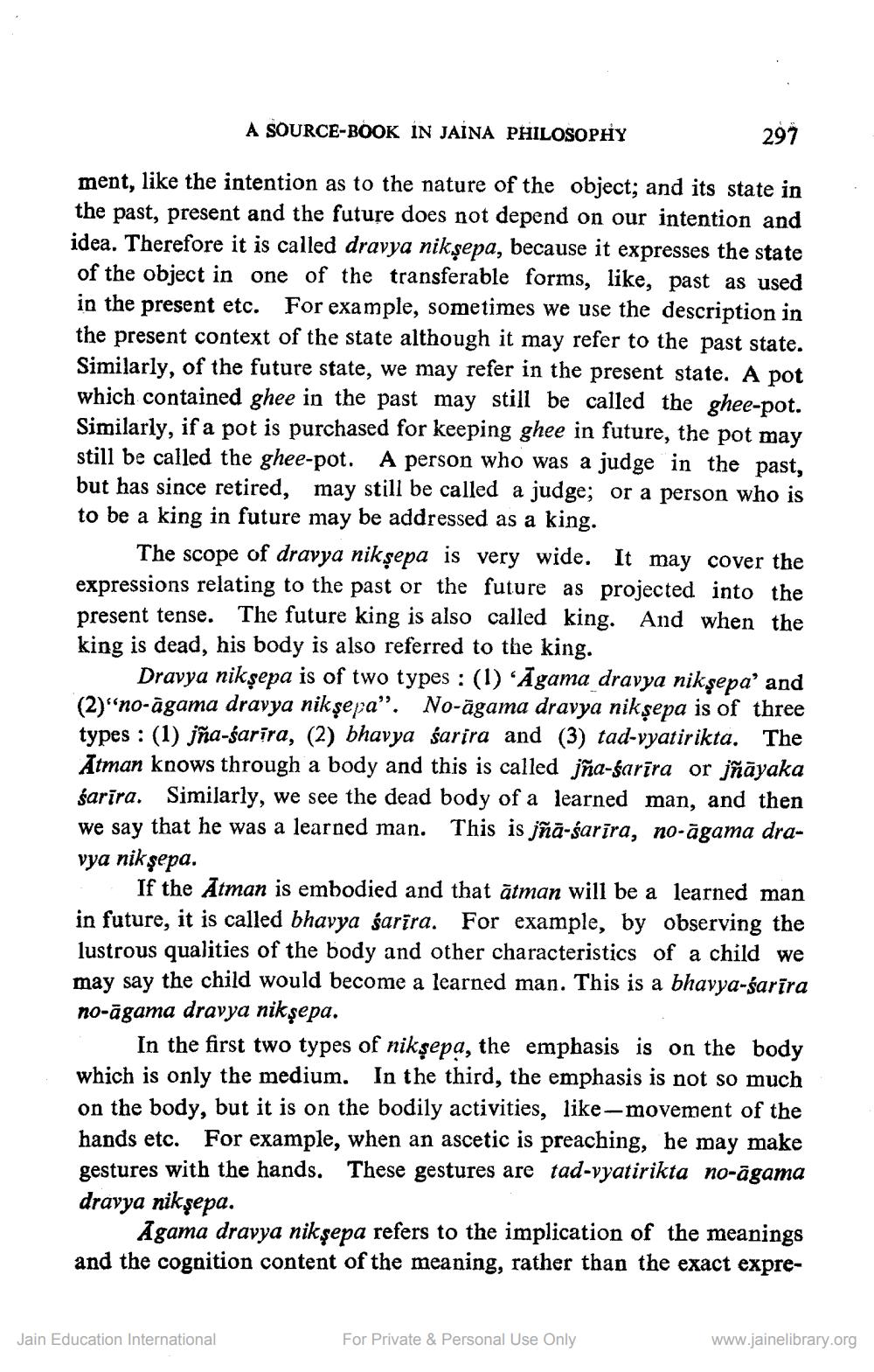________________
A SOURCE-BOOK IN JAINA PHILOSOPHY
297
ment, like the intention as to the nature of the object; and its state in the past, present and the future does not depend on our intention and idea. Therefore it is called dravya nikṣepa, because it expresses the state of the object in one of the transferable forms, like, past as used in the present etc. For example, sometimes we use the description in the present context of the state although it may refer to the past state. Similarly, of the future state, we may refer in the present state. A pot which contained ghee in the past may still be called the ghee-pot. Similarly, if a pot is purchased for keeping ghee in future, the pot may still be called the ghee-pot. A person who was a judge in the past, but has since retired, may still be called a judge; or a person who is to be a king in future may be addressed as a king.
The scope of dravya nikṣepa is very wide. It may cover the expressions relating to the past or the future as projected into the present tense. The future king is also called king. And when the king is dead, his body is also referred to the king.
Dravya niksepa is of two types: (1) Agama dravya nikşepa' and (2) "no-agama dravya nikṣepa". No-agama dravya nikṣepa is of three types: (1) jña-sarīra, (2) bhavya sarira and (3) tad-vyatirikta. The Atman knows through a body and this is called jña-sarīra or jñāyaka śarīra. Similarly, we see the dead body of a learned man, and then we say that he was a learned man. This is jña-sarīra, no-āgama dravya nik şepa.
If the Atman is embodied and that atman will be a learned man in future, it is called bhavya sarira. For example, by observing the lustrous qualities of the body and other characteristics of a child we may say the child would become a learned man. This is a bhavya-śarīra no-agama dravya nikşepa.
In the first two types of niksepa, the emphasis is on the body which is only the medium. In the third, the emphasis is not so much on the body, but it is on the bodily activities, like-movement of the hands etc. For example, when an ascetic is preaching, he may make gestures with the hands. These gestures are tad-vyatirikta no-āgama dravya nikşepa.
Agama dravya niksepa refers to the implication of the meanings and the cognition content of the meaning, rather than the exact expre
Jain Education International
For Private & Personal Use Only
www.jainelibrary.org




